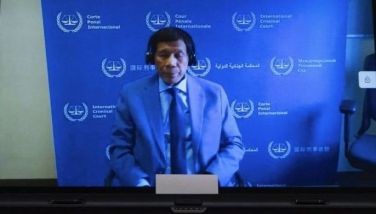Airlift command center aims for efficiency

MANILA, Philippines - Amid criticism that the government’s disaster response is disastrous, the Philippine Air Force (PAF) is hoping to prove the critics wrong.
The PAF’s showcase is in post-Yolanda Cebu, where there are often more aircraft at its base in Mactan these days than at the Ninoy Aquino International Airport in Manila.
The response of the international community to the devastation caused by the super typhoon has been “unprecedented,†according to the United Nations, and this is evident at the PAF Incident Command Center at Mactan Air Base.
Several languages and English in various accents fill the command center, as air force troops from several countries fly in and out of the hub for the airborne rescue and relief operations in the Visayas.
Despite the large number of troops under various national commands, however, the operations are generally smooth, with the PAF coordinating the missions and running the center like a commercial airport.
An official of the PAF said that with the large number of aircraft, the tarmac, which the air base shares with the Mactan-Cebu International Airport, would be clogged with planes and relief goods and crippled within two days. Mactan can handle only three aircraft on the ground at one time.
So the PAF devised a system of facilitating air traffic at the command center, with computerized flight information displayed on a computer screen at the reception area and regularly updated, like in commercial airports.
The official, who asked not to be named, stressed to The STAR the efficiency of the operations to dispel criticism that the rescue and relief effort of the Philippine government was disorganized.
Several countries have brought tons of relief goods to Cebu on their own military C-130 Hercules transport planes, which can operate efficiently even in a harsh environment. A few, like Australia, New Zealand and the United States, allow their aircraft to be used to transport relief goods donated by others or prepared by the Philippine government, and to bring evacuees to Cebu from devastated villages in Samar and Leyte.
From 5 a.m. till early evening, there is an unending stream of mostly C-130s flying out of or into the air base. The Americans have also deployed helicopters and the V-22 Osprey, a fixed wing aircraft capable of vertical takeoff and landing like a helicopter, but they don’t take up space in Mactan. Instead the US aircraft mostly fly in and out of the devastated islands and then return to their aircraft carrier.
To coordinate air traffic, the command center was opened on Monday last week and was up and running by Wednesday. All arriving foreign air force teams must check in at the command center, then fill out forms declaring their personnel composition, the goods and equipment being brought in, the needs of the team, and the identities and contact numbers of the flight leader and load master.
All planned flights must be proposed for approval to the command center by 1:30 p.m. the day before. A coordination meeting attended by representatives of each “partner nation†and the PAF is held at 3 p.m.
Handling of aircraft begins two hours before departure. PAF ground maintenance crew, many still in training, assist in the cargo handling, which is swift and orderly.
Essential goods and equipment as well as essential personnel are given priority in departure, a PAF official told The STAR. Aircraft with no night vision capability get priority for daytime flights.
The C-130 of the Royal New Zealand Air Force (RNZAF) is one of those with night vision capability.
 Squadron leader James Anderson of the Royal New Zealand Air Force pilots a C-130 transport plane over Leyte last Wednesday.
Squadron leader James Anderson of the Royal New Zealand Air Force pilots a C-130 transport plane over Leyte last Wednesday.Last Wednesday, after delivering several tons of relief goods to Roxas City in Capiz and Ormoc in Leyte and transporting evacuees to Cebu, the RNZAF team, accompanied by New Zealand embassy deputy chief of mission Justin Allen, unloaded boxes of biscuits and more sacks of relief packages in the coastal town of Guiuan in Samar.
Guiuan airport was crowded with US Air Force Ospreys and Black Hawk helicopters. The New Zealand C-130 waited on the runway for about 15 minutes as the Americans moved their Ospreys away from the unloading area.
With a forklift and help from locals, it took less than an hour for the Kiwis to unload the relief goods and take in several evacuees. It was pitch-black as the C-130 took off at around 6:30 p.m.
About 45 minutes later, it was back in Mactan, taking its place among about 12 other Hercules planes parked for the night, their teams resting for the next day’s work.
- Latest
- Trending





























